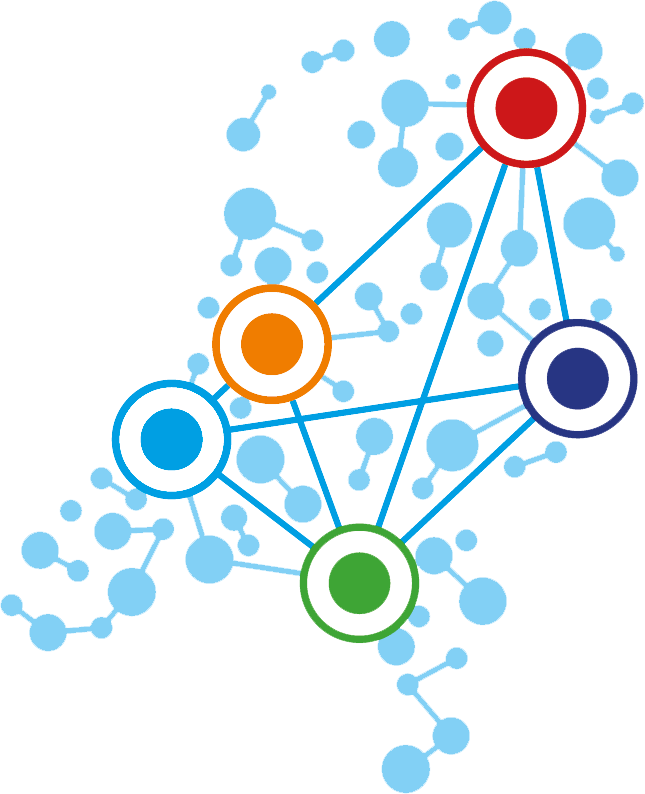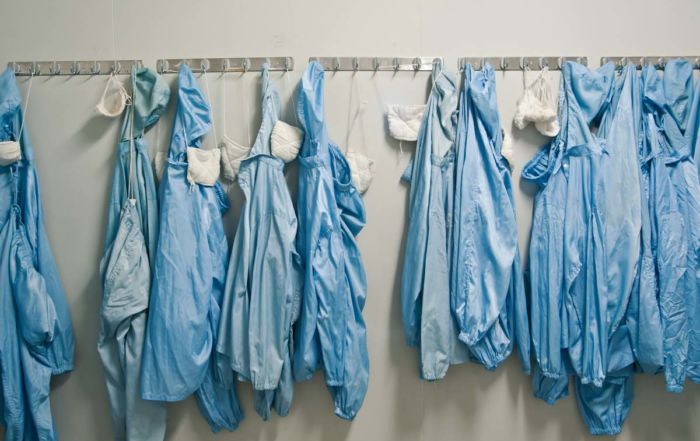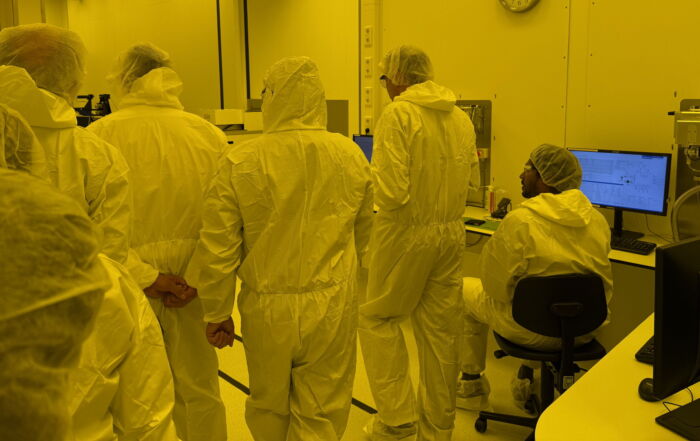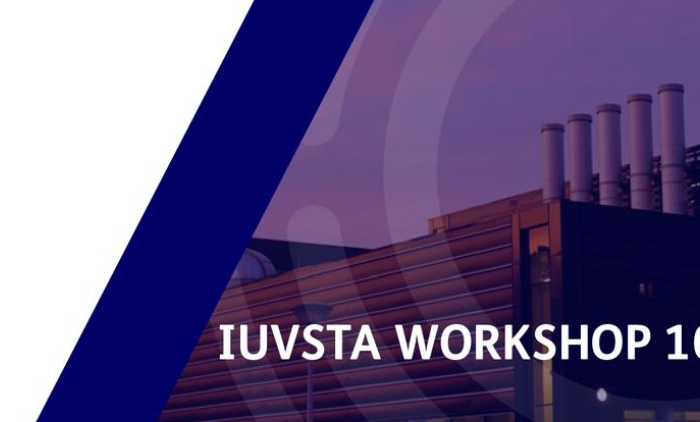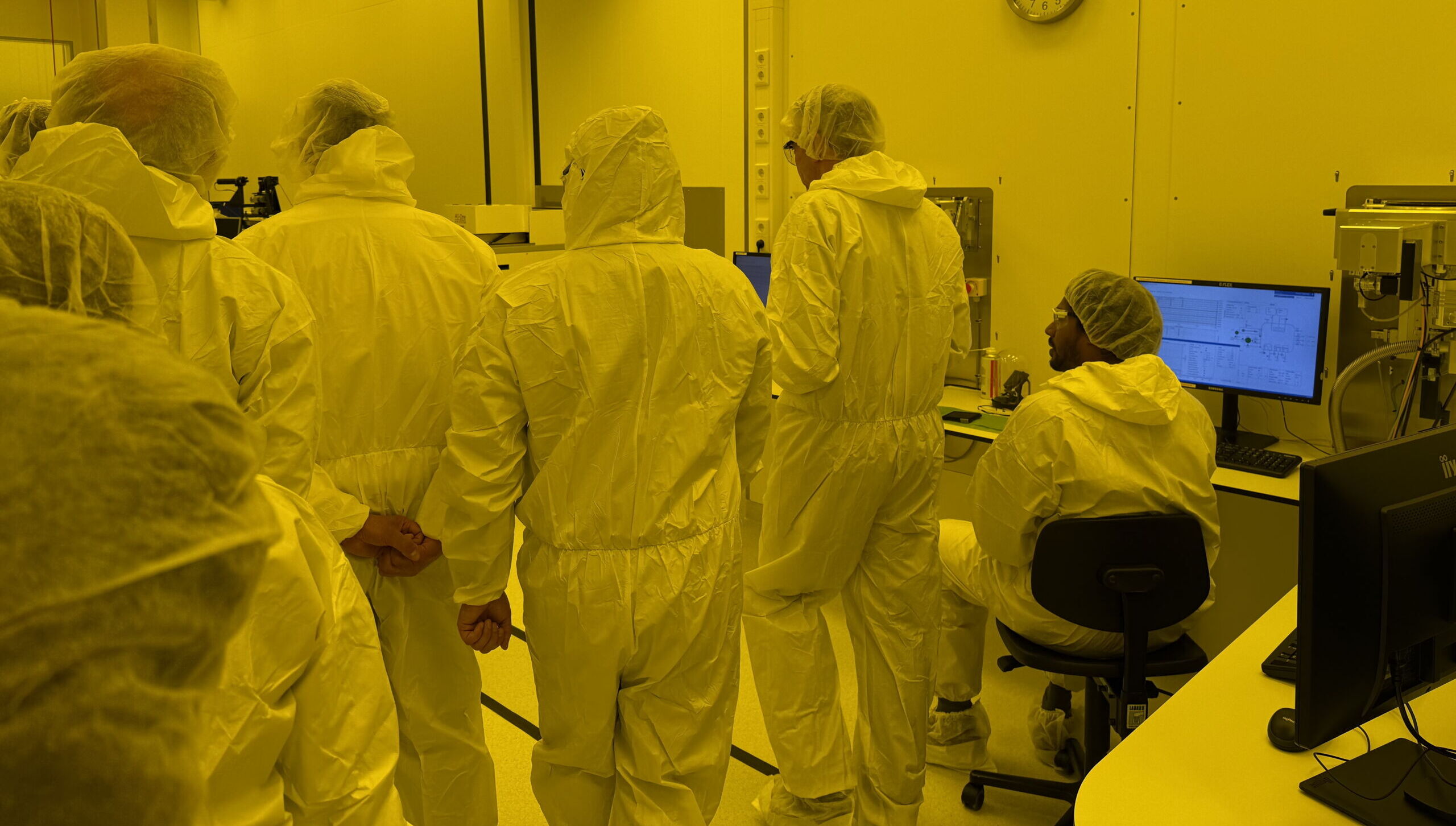
Succesfull NanoLabNL Operator Day
On 7 May 2025, another successful NanoLabNL operator day took place. This time, operators from the NanoLabs in Groningen, Delft, Eindhoven and Enschede visited AMOLF in Amsterdam. There they enjoyed a diverse program put together by Isabelle Palstra, the head of the AMOLF NanoLab since 2024.
The operator day started with a warm welcome and lunch, followed by lectures by the four visiting NanoLabs on a topic of choice. Corné Heeren (University of Twente) kicked off with the lecture ‘Looking into log and meta data of equipment’. Next came Bas van Asten on behalf of Kavli Lab Delft with a lecture on superconducting layers. Johan Holstein, on behalf of the Zernike Institute (University of Groningen), discussed a modular microcontroller he developed, and Wilbert Rooijakkers (Eindhoven University of Technology) delivered a lecture on the current daily challenges at NanoLab@TU/e.
After a short break, the operators were given an insight into fabrication techniques offered at the AMOLF NanoLab through four lectures by AMOLF employees. Lavanya Beri gave a lecture on the fabrication of optomechanical cavities, Sam Boman discussed cathodoluminescence measurement techniques on SEM systems that were developed at AMOLF. Daniel Koletzki showed how he makes nano-electrodes on fibres using FIB, and Masha Ogienko concluded with the lecture titled ‘Template stripping for atomically smooth gold nanocube resonators’.
After the lectures, the attendees split up into smaller groups to discuss a number of topics: measurement system analysis, cleanroom safety, toxic sample handling, user management, and process control.
At the end of the afternoon, all participants alternated between tours of the AMOLF labs and walking past the posters while enjoying a snack and drink. The day ended with a delicious dinner at restaurant Polder on the Amsterdam Science Park.
We look back on a very successful NanoLabNL meeting where new contacts were made and operators, managers, and technicians were able to exchange experiences and ideas about their work at their respective NanoLabs. With this, the ability of NanoLabNL to provide a full-service and open-access infrastructure for R&D in nanotechnology has certainly been strengthened. By connecting the operators of all NanoLabNL sites, so they could share ideas and experiences with each other, we can continue to make improvements that benefit all facilities.
